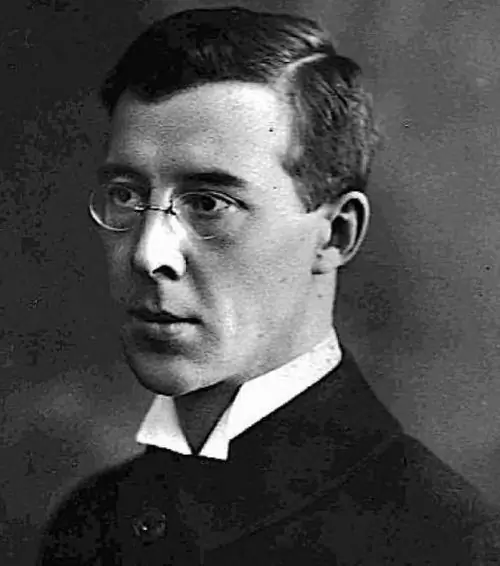- Author Henry Conors [email protected].
- Public 2024-02-12 02:43.
- Last modified 2025-01-23 09:07.
The rise in living standards and the development of high technologies have led to a change in all conditions for the functioning of society, the need to revise the very concept of cultural identity, as well as the mechanisms of its formation in the modern world.
Swift changes, the fragility of new living conditions led to the loss of reference points in the formation of socio-cultural identity. In order to avoid alienation and destruction of cultural communication in society, it is necessary to rethink all spheres of human spiritual activity, taking into account new semantic positions.
Cultural Identity in the Modern World
We live in an age of blurring clear boundaries between societies with different traditional cultures and customs. The trend towards significant interpenetration of cultures has led to the difficulty of human awareness of cultural norms and behavioral patterns accepted in society. But it is precisely their conscious acceptance, understanding of their original "I" based on the cultural patterns of society andcalled cultural identity.
Understanding, consciously accepting and self-identifying with generally accepted cultural norms, a person launches the mechanism of intercultural communication, in which the emerging global virtual space forms new realities. What is the cultural identity of people who listen to the same music, use the same technical achievements and admire the same idols, but have different traditional culture and ethnicity? A century ago, a person's belonging to cultural traditions was easy to determine both for himself and those around him. Modern man can no longer identify himself only with his family or his racial group and nationality. Despite the fact that cultural identity has changed its nature, the need for its formation remains.
Features of the formation of cultural identity in the 21st century
Awareness of oneself included in a homogeneous community and opposing this community to another social group gives impetus to the fact that the formation of cultural identity begins. The isolation of societies, the introduction of the concept of “we” into personal identity and behavioral code contributed to the grouping of all mankind into a social community, because the measure of opposition is at the same time the measure of unification.
In different historical periods, group and individual cultural identity had its own specifics and mechanisms of emergence. For many centuries, fundamental cultural attachments were given out at birth by parents and the local community.

In modern society, the traditional constancy and attachment to the family and the cultural code of one's group is weakening. At the same time, a new division arises, an ever greater segmentation of groups into various small subgroups. Differences within the global group are emphasized and culturally significant.
Our era is the era of individualists striving for self-determination and capable of self-organization into groups according to criteria other than religion, citizenship and nationality. And these new forms of self-identification are blending with deeper layers of traditional culture and ethnic identity.
Problems of preserving cultural identity
Problems of cultural identity have their origins in recent personal freedom. The individual is no longer limited by the cultural values given to him by family and national ties. The global virtual space largely eliminates the difference in cultural differences, which makes it difficult for a person to choose the parameters of identity and classify himself as a member of a particular social group.

Not only cyberspace, but also a qualitative increase in living standards allows a person to break out of the cultural environment in which he would have been bogged down a couple of centuries ago. Cultural achievements, once the prerogative of the elites, are now available to many. Distance higher education, remote work, the availability of the world's best museums and theaters - all this gives a persona huge personal resource that allows for a wider cultural choice, but complicates identification for the individual.
Innovative and traditional culture
Culture includes everything - both new and old. Traditional culture is based on following customs and behavioral patterns. It ensures continuity, the transfer of mastered beliefs and skills to subsequent generations. The high level of normativity inherent in traditional culture establishes a large number of prohibitions and resists any changes.

Innovation culture easily moves away from established patterns of behavior. In it, the individual receives freedom in determining life goals and ways to achieve them. Cultural identity is initially associated with traditional culture. Modern processes, in which more and more space is given to innovative culture, are becoming a good test of the strength of cultural and national identity in our country.
Socio-cultural identity in the face of increased communication between societies
Sociocultural environment implies communication processes between people as the main carriers and subjects of culture. When individuals from different communities interact with each other, their values are compared and transformed.

Global migration processes and virtual mobility of human society contribute to the intensification of intercultural communications and erasurebasic sociocultural features of the country. It is necessary to learn how to control and use for the benefit of the information arrays exchanged by cultural groups, while maintaining their own uniqueness. Next, consider what ethnicity is.
The meaning and development of ethnicity
Ethnic cultural identity is the result of an individual's connection with the historical past of the ethnic community to which he belongs, and the awareness of this connection. The development of such awareness is carried out on the basis of common historical symbols, such as legends, symbols and shrines, and is accompanied by a powerful emotional outburst. By identifying himself with his ethnic group, realizing its uniqueness, a person separates himself from other ethnic communities.

The emerging ethnic consciousness allows you to build a system of behavioral models in contact within your group and with other ethnic groups, accompanied by high emotional reinforcement and moral obligations.
Ethnicity includes two equivalent components: a cognitive one, which determines knowledge about the historical and cultural characteristics of one's people, and an affective one, which gives an emotional response to membership in a group.
The problem of losing ethnic identity
The problem has arisen recently, due to the wide spread of intercultural contacts. Having lost the opportunity to identify himself through sociocultural characteristics, a person seeks refuge in a grouping along ethnic lines. Belonging to a group makes it possible to feel the security and stability of the world around. Russia is a multinational country and the unification of cultures of various ethnic groups requires the manifestation of considerable tolerance and the education of correct intercultural and interreligious communication.

Globalization, which has shaken traditional models of cultural identity, has led to a break in continuity. The previous form of self-consciousness fell into decay, without having developed mechanisms of compensation and replacement. The inner discomfort of individuals prompted them to be more isolated in their ethnic grouping. This could not but increase the degree of tension in a society with a low level of political and civil self-awareness and a sovereign mentality. There is a need to form the unity of the peoples of Russia, taking into account their cultural and ethnic differences, without opposing groups to each other and infringing on small peoples.
Personal identity
It is difficult to dispute the statement that there are no absolutely identical people in the world. Even identical twins brought up in different socio-cultural conditions have differences in their traits and responses to the outside world. A person has different characteristics that connect him with different cultural, ethnic and social groups.
The set of identities on various grounds, such as religion and nationality, race and gender, is the definition of the term "personal identity". In this totality, a person absorbs all the foundations of ideals,morality and traditions of his community, and also builds an idea of himself as a member of society and his role in it.
Building a multicultural identity
Any changes in the process of development of cultural, social and ethnic patterns of behavior lead to a transformation in what we call "personal identity". Consequently, the presence of problems in any of these areas will inevitably result in an identity crisis, the loss of one's own "I".

It is necessary to find an opportunity to build a harmonious multicultural identity and, relying on a variety of behavioral patterns, choose the right ones for yourself. Building an ordered "I" step by step, systematizing values and ideals will lead to an increase in mutual understanding between individuals and sociocultural groups.






